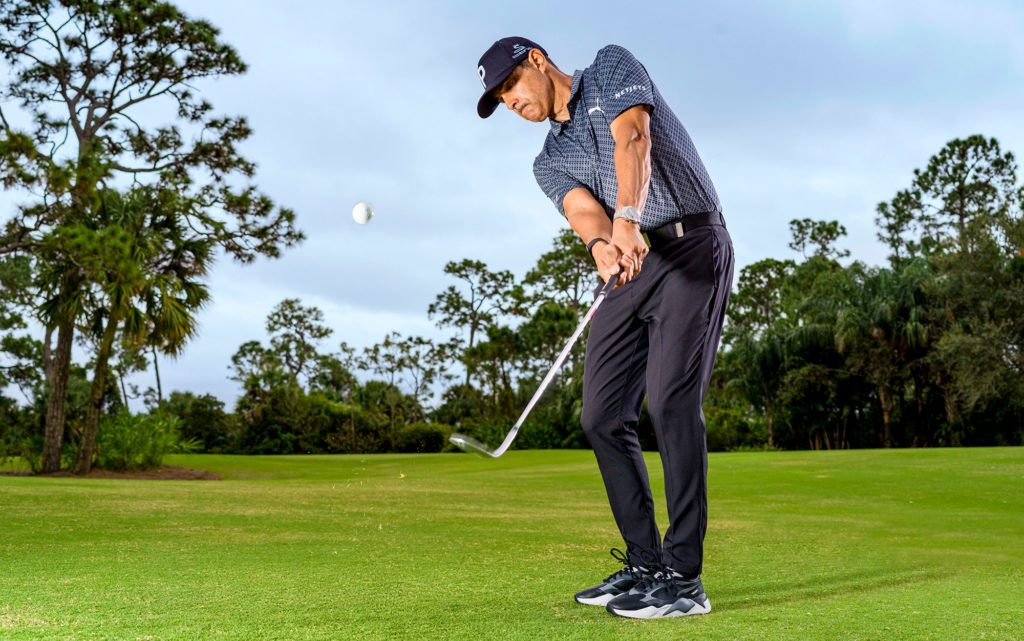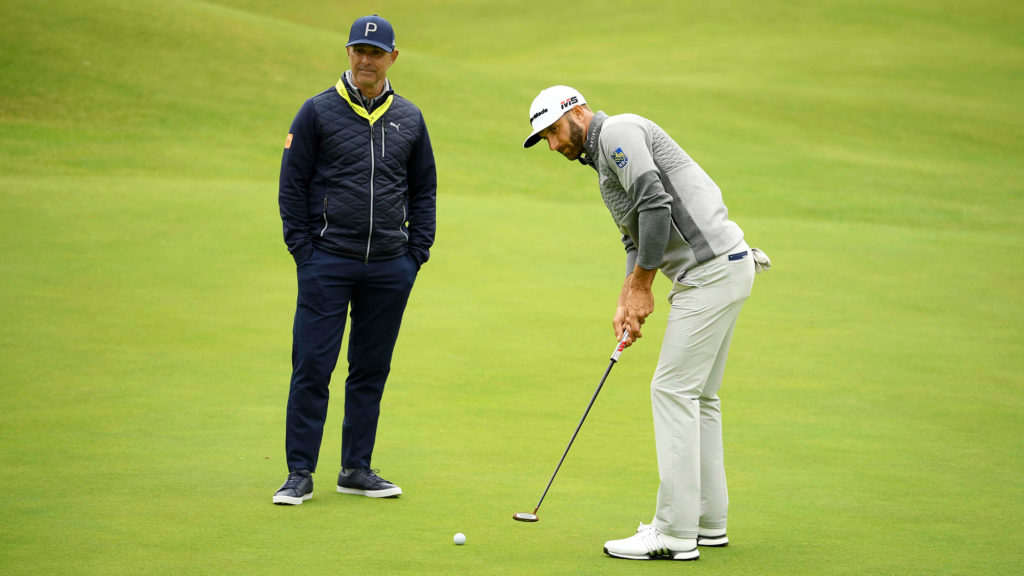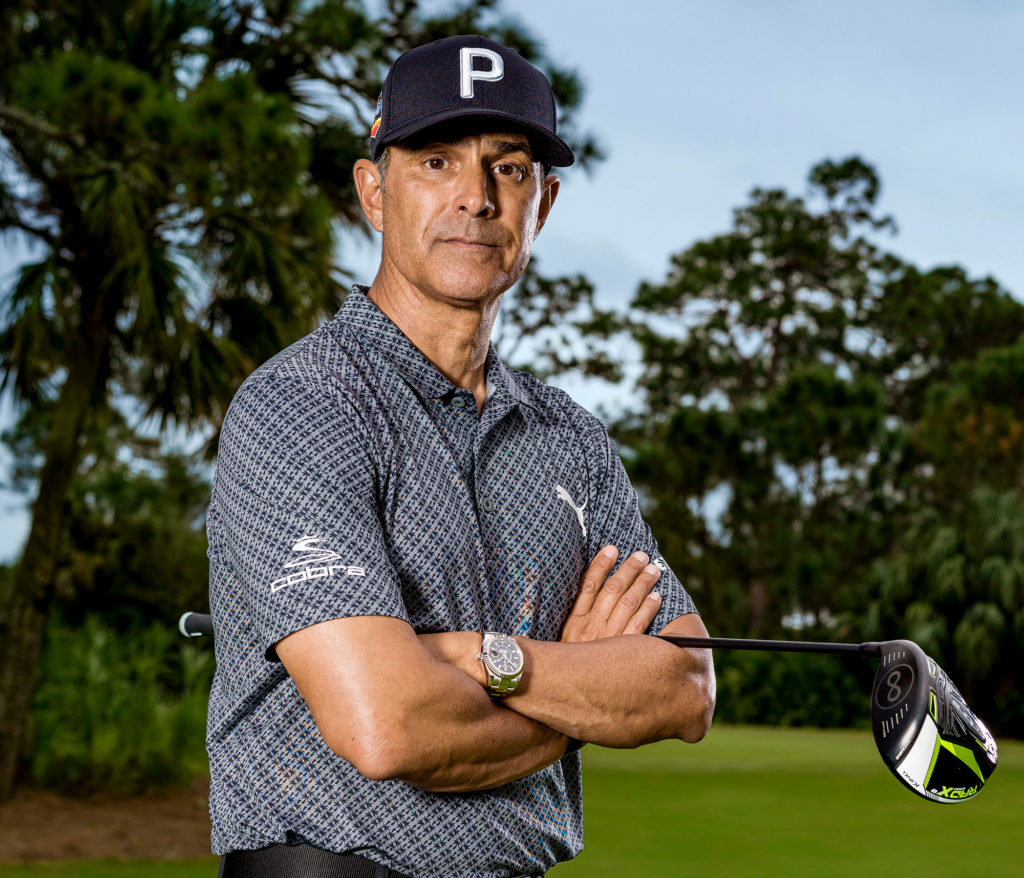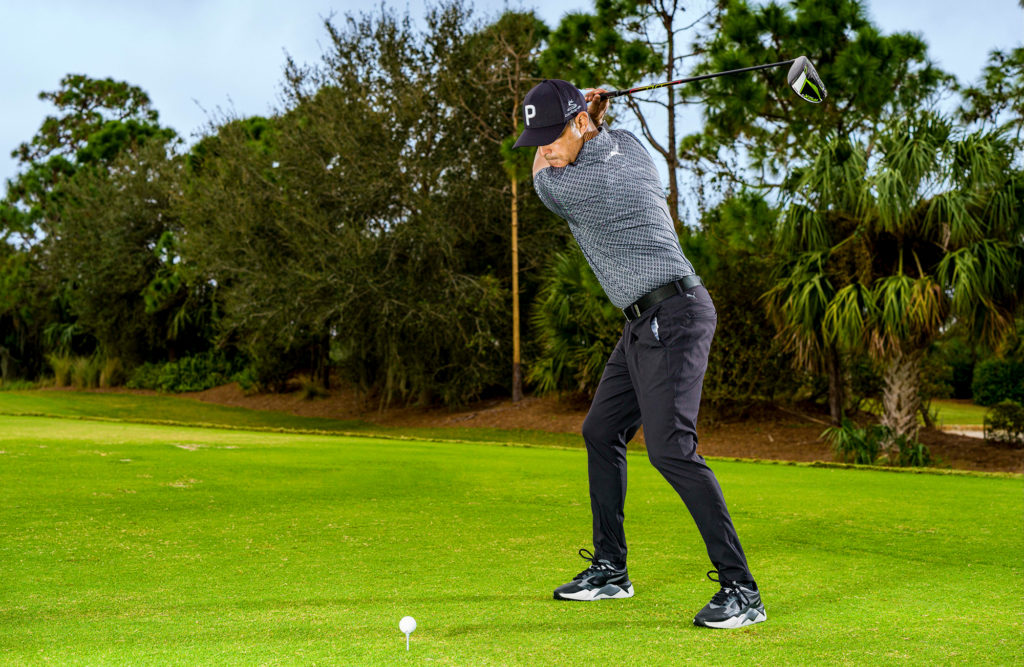If you want to break 80, it’s time to stop thinking about it, stop hoping it might someday come. it’s time to take action. and i’ve got the plan.
Everybody wants to hit it farther off the tee and hit their irons closer to the hole. It’s not just you. I get a handful of mini-tour players with big dreams who come to me every year thinking that the only thing separating them from a 20-year career on the PGA Tour is the ability to hit the ball a little better. But guess what? That isn’t true for them, and if you want to break 80, it isn’t true for you. The path to a single-digit handicap or a career on the big tour is the same – make more bogeys.
You read that right. The secret to shooting in the 70s isn’t increasing the number of pars or birdies you make. That certainly helps, but the real key is salvaging bogey when you could have taken a double, triple or worse. If you routinely break 90, your “good” is good enough. We just have to make your bad less bad. That comes from practising the right things, taking those new skills to the course and making better decisions.
It’s time to play like you mean it – I’ll show you how.
How to practise
Reality check: you need to work on your putting
I’m amazed that most amateurs don’t even make a cursory effort to figure out where they’re actually losing shots – and which of those areas are the simplest and fastest to improve.
You might need to hit 400 balls with your driver to get it where you want it to be, but spending 20 minutes on the putting green doing this exercise will have way more impact on your score. One of my tour students, Kris Ventura, showed it to me, and I love how it instantly helps you focus on what matters instead of reflexively grinding on your stroke mechanics.
Take a stride from a hole and drop one ball [left]. For every additional stride, drop that number of balls – two from two steps, three from three steps, and so on. The number of balls represents the attempts you have to make at least one so you can move on to the next station. For example, from four strides – about 15 feet – you get four tries. If you miss all four, move back to the previous station.
With this drill, you get sharper on seeing line and speed and learning from every putt you hit. That process is much more valuable than methodically making 30 four-footers in a row. How far out can you get with this drill? Kris runs out of practice green.

Stop getting cute around the greens
Want to know what makes short-game shots really hard? Approaching them as if every one demands a special kind of creativity. When each shot feels like an experiment, the odds of pulling it off aren’t very high. Instead of working on your artistry by hitting a million little shots, I want you to take three clubs – a lob wedge, a sand wedge and a pitching wedge – and work on the same ‘vanilla’ pitch swing with each of them.
Set up with the ball in the centre of your stance, the shaft neutral (straight up and down) and the club soled square – not flared open or hooded shut. Now take some easy, waist-high-to-waist-high swings where you brush the turf [above]. See what the flights and distances look like with those three clubs. Now you can easily change the height of your shots, and you have three stock distances you can hit with no drama. Do the same with three-quarter-length swings, and you will have six options.
You’ll still run into situations where this technique might not work, but most of the time it will prove reliable and tighten your results pattern. Getting on the green every time and leaving yourself shorter putts is how you ensure no worse than bogey.
Stop swinging out of your shoes
I know you’re focused on the curve of your shots – are you drawing it or fading it. I want you to forget about that for now and instead concentrate on hitting the ball solid every time. When you focus on hitting it flush, you’re going to end up with way more playable results.
Let’s start with the irons. One really common reason for poor strikes is bad footwork. When you aren’t stable at impact, it’s hard to control the clubface. A simple way to think about better footwork is to feel your weight transition into the lead heel at impact – not the toe, where many players shift it. Get a feel for this pressure position before you swing by pushing into that heel while leaning your shaft towards the target [above]. Then try to hit shots reproducing that feel.
Same advice applies for hitting driver – get into that lead heel. Doing it with a driver offers an important secret benefit: if your footwork is good and you catch one in the centre of the face, you don’t have to swing as hard to send it. Losing a few miles per hour of clubhead speed but routinely finding the sweet spot gives you power and control. It’s a lot easier to make no worse than bogey if you’re in the fairway off the tee.
How to take it to the course
Get a lot smarter about how you practise
There isn’t much point to practising if it doesn’t translate into improvement when you play. You need to be practising the right things (which we’re taking care of here), and you have to do whatever you can to simulate the pressure felt when it’s time to actually keep score.
You can make off-course work seem closer to what it feels like when you practise by using my 14-hole challenge (typically the number of par 4s and 5s on a course). Here’s how it works: pick two markers on the practice range – 30 or 40 yards apart for a driver, narrower for other clubs. Now hit a drive. If the ball lands between the targets, switch to an iron and try to land one ball inside another designated area – 60 feet across for a longer irons, 40 for middle irons and 20 for short irons. If you’re succesful, go to the practice green and drop a ball for a random five-foot putt. Make it, and you qualify to move on to the next hole.
Fail any part of this three-shot process, and you have to start the hole over again. In your 14-hole circuit, make sure you mix in at least two 3-woods and one other club off the tee, and you can hit no more than four of the approach shots with the same iron. You’ll be amazed how fast an hour of practice goes by and how much it improves your control on the course.

How to play smarter
Take your eyes off the flagstick on par 3s
After my student Kris Ventura’s first year on tour in 2019, his strokes-gained stats revealed a precise picture of his strengths and weaknesses. He had amazing putting stats, but he was like a 15-handicapper relative to the rest of the tour when it came to playing par 3s. That’s a consistent problem I see in amateur golf, too. It’s usually because you come to a lot of par 3s with a shorter iron in your hand, so you feel like you should be aiming at the flag.
Look at the flag in this picture [above]. This shot is only 126 yards, but going for that pin brings double-bogey into play if I’m short, and possibly the same if I’m not committed and hit a soft, off-speed pitching wedge into that deep bunker on the far right. The next time you play, I want you to get all the par-3 distances to the middle of the green and play for dead centre. The flag doesn’t matter. Your mission is to give yourself the best chance at a green in regulation. Stick to that plan, and I bet you make the same number of birdies you did before, but your card stops getting destroyed by the doubles you used to make. You’ll also card a lot more no-drama pars. If you can play the three-shot holes on your course in one or two over par, breaking 80 is in sight.

Save shot-shaping for the experts
I’ve heard all the rhetoric about the importance of shaping shots both ways, but I can tell you that Dustin Johnson might hit a dozen draws off the tee in a year. He almost always sticks with his cut. Can he hit a draw? Absolutely – on command. Should you, a person who doesn’t play for a living, go against your preferred shape because the hole sets up better for the other shape? No way. Embrace your usual shape, and hit it over and over.
Just make sure you’re doing it the right way. If you’re a righty who hits a draw, the ball has to start right of the target. Faders need to start it left. So many players line themselves up aimed dramatically left or right because they’re trying to plan for their shot shape. But they don’t account for where the ball should start.
Instead, pick your starting point as a reference in the distance – a tree, a window in a house, etc, and align yourself to that. The goal is to start the ball on that line, so that it curves back to where you want it to land.

Track your shots every time you play
I find it ironic that many amateur players I work with at The Floridian have an unbelievable grasp of the minute details about their equipment, but they don’t know exactly how far they carry the ball with each iron.
It’s great to know who on tour is using the same shaft as you or what the grind is on your new wedges, but having specific knowledge of on-course tendencies and performance is far more valuable. Wouldn’t it be useful to learn that the past dozen 8-irons you hit on the course ended up 10 yards short of what you thought they were flying? Or that your dominant driver miss is on the opposite side of the fairway of your typical hybrid miss? There are many systems and apps that can track your shots and give you the reality of what you’re doing out there to help you improve course management. That saves shots. Embrace the tech.

How the Pros do it
Don’t try to fix your game during a round. go with what you’ve got
Tour players obviously have a lot more skill than you have, but where they really separate themselves from amateur golfers is how they compete. They know how to separate the work they do on their game from what they need to do to score when they play. One example: to regain the top spot in the Official World Golf Ranking, DJ really improved his putting in 2020, and it had nothing to do with tinkering with his mechanics – especially during a round.
He and his brother Austin (his caddie) changed the emphasis in their pre-putt routine to be much more about pace and read. His practice strokes were with his head up, seeing what he wanted to do, and he was not thinking about his stroke at all. You can constantly worry about your swing and why you pushed or pulled that last putt, but those thoughts are only hurting you and preventing you from being free enough to do what you need to do on the next shot. You can let your focus go to your mechanics and your mistakes, or you can change the focus and think more like a tour pro. No matter how your putting stroke or swing feels during a particular round, think, This is what I have today, and I’m going to use every bit of it to score. In other words, play like you mean it.

Photographs by John Loomis








